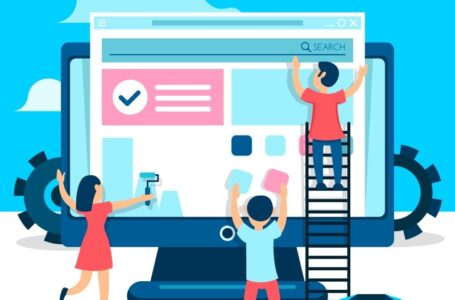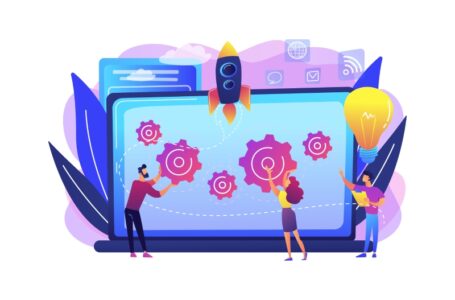Reinventing Web Design: Grapes Studio Lets Small Businesses Build Sites in Minutes
What Is The Content Marketing Funnel?

You’ve identified your target potential customers, matched your content creation, and leveraged different types of content to promote your products or services. So your content strategy seems pretty solid, right?
The truth is, your content marketing efforts can and should always grow.
Just as strategic marketing best practices evolve and adapt to current trends in consumer behavior, so does content marketing.
Your sales team may have mapped out a sales funnel to better understand what your target audience is thinking and doing at each stage of the buying journey.
You can also create a content marketing funnel to guide your ideal customer from the awareness stage to the conversion stage, where they become actual customers.
In this article, we’ll explore exactly what a content marketing funnel is, how to create a successful content marketing funnel that converts, and what type of content to include at each stage of the funnel.
What is a content marketing funnel?
Content marketing funnels allow content marketers to visualize how to leverage existing content to engage potential customers and guide them along the journey until reaching their ultimate goal. This end goal could include sales, referrals, downloads, or some other type of conversion.
Each funnel stage provides a goal, such as capturing attention, generating high-quality leads, and closing conversions.
Marketing funnels can give brands greater visibility into content gaps throughout the customer journey.
For example, if a brand has a significant amount of content aimed at popularity-stage buyers but not enough decision-stage content, the brand may want to redirect its efforts toward content creation. lower.
How to start mapping your content channel
First, you’ll want to evaluate your current content inventory, including any type of content you produce, whether it’s blog content, long-form content (such as ebooks or white papers), etc
As you review each piece of content, you’ll next want to specify which stage of the buyer’s journey it’s appropriate for. These steps will include:
Top of the hopper (TOFU): Cognitive stage. At this stage, potential customers are looking for information.
Mid-hopper (MOFU): The concern and review phase. At these stages, potential customers view your product or service and read customer reviews. They may also present this information to key stakeholders.
Hopper Bottom (BOFU): Intent, Evaluation, and Conversion Stages. Buyers are ready to continue with their purchase decision.
As you can see by looking at each step individually, your target audience needs different pieces of content depending on their location.
Your content funnel can’t take a one-size-fits-all approach, or you won’t be reaching potential buyers effectively. Relevant content should be presented at every stage of the funnel.
Discover the types of content that work best for each stage of the funnel.
Top channel content
The top of the funnel is where customers gather information to guide them through the buying journey.
At this point, customers can begin to get acquainted with your business and what you have to offer. Here, you want to create a positive customer experience to show your buyers that you’re worth more engagement.
You’ll want to answer their questions, educate them about their queries, and turn those leads into leads.
A study conducted by Semrush found that the following TOFU content types work best for driving traffic.
- Guide “How To” (72%).
- Landing page (35%).
- Computer graphics (28%).
- Checklist (27%).
- E-book/white paper (26%).
- Video tutorials (23%).
As you can see, most of these types of content are educational materials designed to provide additional information during the awareness stage.
The main focus of your content at this stage should be to provide help, and it shouldn’t be too sales-oriented.
Intermediate channel content
Once your ideal customer has reached the middle of the funnel, they are no longer looking for surface referral content.
Instead, you’ll want to focus on creating content that nurtures leads at the bottom of the funnel. They can look for customer testimonials, product reviews, or explainer videos. Looking at the results of the same Semrush study, the following MOFU content types perform better in attracting traffic.
- Guide “How To” (44%).
- Product presentation (40%).
- Case study (34%).
- Landing page (31%).
- Webinar (31%).
- Success stories (30%)
Consider that these leads may have been introduced to your brand in the discovery phase and therefore shouldn’t have presented the content in the discovery phase. An effective content strategy is to personalize content for your audience.
In fact, research shows that 71% of consumers expect companies to offer personalized interactions — and 76% are disappointed when that doesn’t happen.
If you don’t tailor your content plan and content marketing format to your customers at every stage, you risk creating a poor customer experience with your business.
The bottom content of the funnel
Once a prospect has reached the bottom of the funnel, they’re looking for content that helps them make a final purchase decision. They want to know how your product or service will provide a worthwhile return on investment and why you are a better choice than your competition.
Since these customers are past the awareness stage and looking for potential conversions, the type of content you present to them is critical to building trust and ultimately completing a purchase.
The content you present during the review phase can be the difference between conversions and lost sales. The top performing content types at the BOFU stage include:
- Product introduction session.
- Customer Feedback.
- Fight on.
Consider sharing success stories from existing customers similar to your leads at this point in the funnel.
Other examples of content to include at this stage are email campaigns with positive customer testimonials and product endorsements. Also includes special offers, free trials or live demonstrations.
What to do after you’ve rated your content
After you have a complete look at the content that exists for each stage of your journey, it’s time to determine where you have gaps.
You’ll also want to define the types of content resources you need to create. For example, you may have determined that you lack content that is practical for buyers in the awareness stage. Or, maybe, you don’t have enough customer success stories.
Once you’ve identified content gaps, it’s time to set up an editorial schedule to prioritize what needs to be addressed first and when.
Your editorial calendar should be tracked daily to keep track of what you have in queue, what’s coming out, the intended content audience for the article, and where the article will be in the content marketing funnel. dung.
It can also be helpful to conduct a competitive analysis of your competitor’s content marketing strategies to identify opportunities for additional new pieces of content and how you can improve yours.
You want content that is both relevant and useful to meet the standards of Google’s useful content system and create an optimal user experience.




